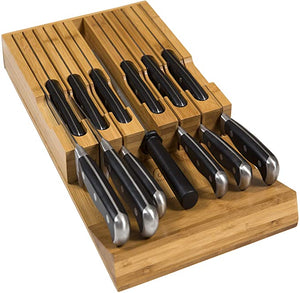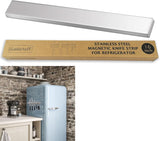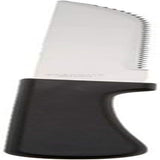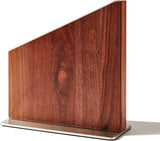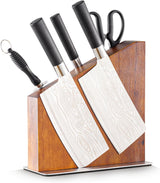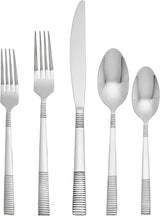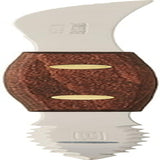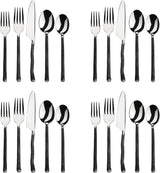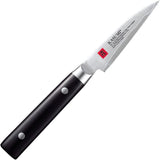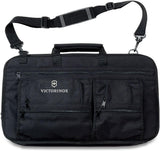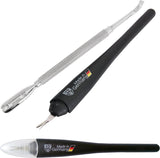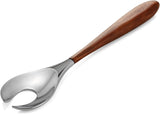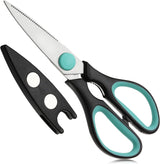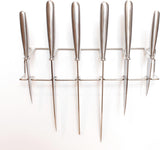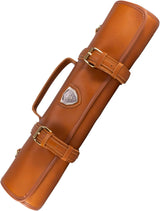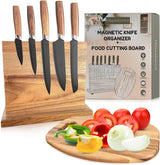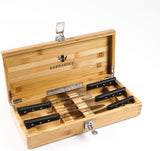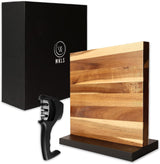A nakiri knife is a must-have in any kitchen enthusiast's arsenal. This traditional Japanese vegetable knife is designed for precision and speed, making it an indispensable tool for those who enjoy cooking at home. Now, you're probably wondering, how to cut with a nakiri knife to achieve those perfect slices and dices? We're delighted to provide you with a comprehensive guide that will cover all aspects of using this terrific knife.

Why Use a Nakiri Knife?
Before delving into the techniques, it's important to understand what makes the Nakiri knife special. Unlike the common chef's knife, which is versatile but often cumbersome for intricate vegetable work, the nakiri knife features a straight blade edge. This design allows for cleaner and more precise cuts, particularly with vegetables.
In addition, the flat blade makes it easier to make contact with the surface of your cutting board, reducing the chance of your food getting stuck to the knife. This trademark feature of the nakiri knife makes it ideal for slicing, dicing, and chopping vegetables with finesse and confidence.

Understanding the Anatomy of a Nakiri Knife
To effectively learn how to cut with a nakiri knife, you first need to become familiar with its different parts:
- Blade: Usually made from high-carbon stainless steel or Damascus steel. The edge is generally straight, facilitating fluent cutting motions.
- Handle: Ergonomic and balanced, the handle ensures a comfortable grip, which is crucial for maintaining control during use.
- Heel: The heel of the knife provides additional force and stability when cutting through more challenging ingredients.
The Correct Grip
Before using any knife, it's crucial to understand the correct way to hold it. For the Nakiri knife:
- The Pinch Grip: Pinch the blade of the knife between your thumb and index finger, just above the handle. Your remaining three fingers should wrap around the handle.
- The Handle Grip: While not as precise as the pinch grip, holding the handle can still provide substantial control and is more comfortable for beginners.

Basic Cutting Techniques
Now that you're acquainted with the knife's anatomy and how to properly hold it, let's explore the fundamental cutting techniques:
Chopping
Chopping is one of the most basic yet essential techniques. The flat edge of the Nakiri knife makes it particularly effective for this. Start by:
- Placing the vegetable on the cutting board.
- Pressing down in a straight motion to slice through it.
The Nakiri knife allows for multiple quick chops without needing to lift the knife too far from the cutting board, enhancing both speed and efficiency.
Slicing
For thin, consistent slices:
- Use a gentle back-and-forth motion.
- Maintain consistent pressure to produce even slices.
This technique is perfect for vegetables like cucumbers and zucchinis. It's here that the Nakiri shines compared to other knives, with its ability to create perfectly uniform slices.
Dicing
To create small uniform cubes:
- First, slice the vegetable into uniform planks.
- Stack planks and cut them into strips.
- Finally, cut across the strips to form even cubes.
This method is ideal for creating diced ingredients for stews, soups, and salads.
Advanced Techniques
Once you have mastered the basic techniques, you can explore more advanced methods:
Julienne Cuts
These thin, matchstick-like cuts are perfect for stir-fries and garnishes:
- Start by cutting the vegetable into thin planks.
- Then slice the planks into thin strips.
The straight blade of the Nakiri knife is particularly effective for achieving uniformity in these cuts.
Chiffonade
This technique is commonly used for leafy vegetables and herbs:
- Stack the leaves.
- Roll them tightly.
- Slice across the roll to create thin ribbons.
The result is delicate, uniform strips that are perfect for garnishes and salads. For a deeper understanding of various knife techniques, take a look at this guide.
Safety Tips
It's crucial to keep safety in mind when using any knife:
- Sharpen Your Knife: A sharp knife is safer because it requires less force and is more predictable.
- Use a Stable Cutting Board: Ensure your cutting board doesn't slip to prevent accidents.
- Proper Storage: Store your Nakiri knife in a knife block or on a magnetic strip to keep the blade in excellent condition.
Caring for Your Nakiri Knife
To ensure your Nakiri knife remains in top condition:
- Hand Wash Only: Avoid putting your Nakiri knife in the dishwasher. Instead, hand wash it with mild soap and water and dry it immediately to prevent rust and staining.
- Regular Sharpening: Use a whetstone or professional sharpening service to maintain the blade's edge.
- Proper Storage: Store it in a knife block or on a magnetic strip to protect the blade and prevent accidents. Check out these tips for knife care.
Maintaining your Nakiri knife well will ensure it continues to perform superbly for many years to come.
For more information about the differences between Nakiri and Santoku knives, check out this comparison guide.
Read more about Henckels Statement Knife Set and McCook MC21 Knife Sets.
FAQ
What is the primary use of a Nakiri knife?
The Nakiri knife is specifically designed for chopping, slicing, and dicing vegetables with precision.
Can a Nakiri knife be used to cut meat?
While it's best suited for vegetables, a Nakiri can handle boneless meat; however, it's not ideal for butchery tasks.
How should I sharpen my Nakiri knife?
Regularly sharpen your Nakiri knife using a whetstone. You can also opt for professional sharpening services for the best results. For more on knife sharpening, read this article.
As an Amazon Associate, I earn from qualifying purchases.
